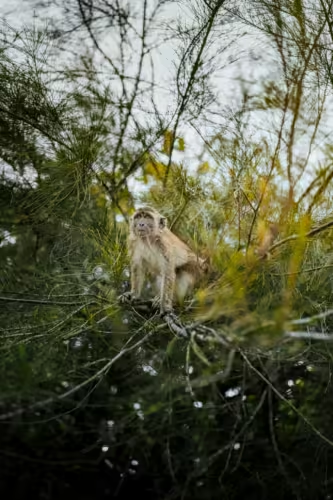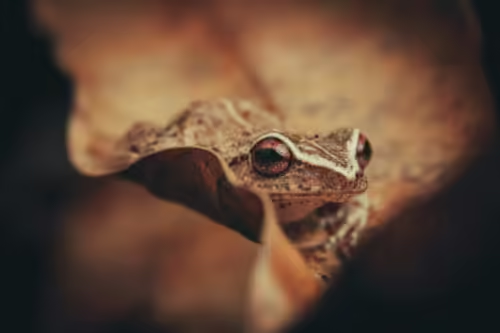Ethical and Sustainable Methods for Collecting Insects. How can insect enthusiasts ensure their practices are both ethical and sustainable? This question sits at the heart of a growing movement towards responsible collection practices, driven by increased environmental awareness and a desire to preserve our planet’s biodiversity. While the allure of the insect world is undeniable, it is crucial to approach collection with a sense of stewardship, ensuring that such practices do not harm ecosystems or biodiversity.
In recent years, the interest in insects has broadened beyond the realms of scientific research and professional entomology into mainstream hobbies. This surge in insect collecting calls for increased diligence in ethical practices to prevent the detriment of fragile ecological systems. The journey of understanding ethical collecting practices comes with delving into the history of the field, examining current trends, and exploring innovative methods that promise to safeguard future generations of insect populations.
Table of Contents
Historical Context of Insect Collection
Insect collecting has long been an integral part of scientific discovery. From the early naturalists who documented species unknown to the Western world, it has played a key role in enhancing our understanding of entomology and biodiversity. Historically, collectors have not always considered the long-term ecological impacts of their activities. Yet, as the modern conservation movement has grown, there has been a marked shift towards more mindful practices.
The Victorian era saw a notable increase in amateur collectors, many keen to explore the vast troves of insects accompanying colonial expansion. Collections from this time provided critical biological insights and continue to be invaluable resources for current research. However, these practices often lacked a sustainable ethic, sometimes exhausting local insect populations. The historical approach underscores the necessity of adopting more sustainable methods moving forward.
Current Trends in Ethical Insect Collection
Today, there is a conscious shift in insect collection, led by both technological advancements and a growing public interest in sustainability. Current trends focus on minimizing ecological disruption while still allowing for personal exploration and scientific inquiry. The increased usage of digital tools is a significant development. High-resolution imaging and identification apps allow enthusiasts to contribute to entomological databases without physically collecting specimens.
Moreover, the citizen science movement empowers individuals to engage in meaningful scientific contributions with minimal environmental impact. By observing and documenting living insects in their natural habitats, collectors can help scientists track changes in insect populations and distribution without adversely affecting biodiversity.
Key Concepts and Definitions
Ethical Insect Collection: This refers to methodologies that focus on minimizing harm to ecosystems while ensuring that any resulting data is of scientific value. Ethical considerations might include ensuring the collection does not disrupt the breeding patterns or local abundance of insect populations.
Sustainable Practices: These involve methods that allow for ongoing enjoyment and scientific study without degrading the quality of the environment for future generations. Sustainable practices typically encompass principles of reduced collection, habitat conservation, and the promotion of biodiversity.

This image is property of images.pexels.com.
Methods for Ethical and Sustainable Insect Collection
Non-invasive Collection Techniques
Non-invasive methods are at the forefront of sustainable insect collection. These techniques aim to minimize physical harm to insects and their habitats. Strategies include photography, sound recordings, and other non-lethal methods to study and document insect life. Such techniques are particularly valuable for species that are rare or at risk, where even small populations could be jeopardized by overcollection.
Limited Specimen Collection
In instances where physical specimens are required, collectors can turn to methods that limit their environmental impact. This approach involves setting strict limits on the number of insects taken from any given area and ensuring that collection does not occur during sensitive seasons such as breeding or migration periods. Moreover, collectors should focus on common species, avoiding those that are already under environmental stress.
Controlled Environment Studies
Entomologists often conduct studies in controlled environments such as laboratories or greenhouses, where insects are bred and observed under scientific conditions. This approach not only reduces the impact on natural populations but also provides detailed insights into the life cycles and behaviors of insects. By using greenhouse populations, researchers can mimic natural conditions and conduct experiments without disturbing wild populations.
Example Case Studies: Ethical Collection in Action
Case Study 1: Citizen Science Projects
Numerous projects illustrate the power of collective effort. Initiatives such as the Monarch Butterfly Monitoring Scheme exemplify how citizen science contributes valuable data without conventional insect collection. Participants document sightings and activities of monarch butterflies, providing crucial information for conservationists tracking migration patterns and population health.
Case Study 2: Digital Documentation Initiatives
Projects like iNaturalist enable enthusiasts to share images and observations with a global community of scientists and hobbyists. This type of digital collection negates the need for capturing physical specimens, promoting a wider understanding of insect distribution and frequency while preserving individual ecosystems.

This image is property of images.pexels.com.
Comparing Various Perspectives on Ethical Collection
| Aspect | Conventional Collection Practices | Modern Sustainable Practices |
|---|---|---|
| Impact on Ecosystem | Often disruptive | Minimizes ecosystem disruption |
| Methodology | Primarily physical collection | Emphasis on non-invasive methods |
| Species Documentation | Selective and sometimes biased | Inclusive via broad citizen input |
| Data Usage and Accessibility | Limited to collectors’ networks | Globally accessed and utilized |
| Conservation Focus | Secondary to collection goals | Integral to collection methodologies |
Impact Assessment of Current Practices
The transition towards ethical and sustainable insect collection holds significant implications. By opting for non-invasive and limited collection practices, we can help maintain or even enhance local biodiversity. Moreover, through digital documentation and citizen science partnerships, there is unprecedented potential for enabling widespread public engagement in conservation efforts.
These methods foster an inclusive environment where both professional entomologists and amateur collectors contribute to the collective understanding of entomology in non-detrimental ways. The broader accessibility of insect data also accelerates response times when addressing conservation issues, allowing for effective interventions based on real-time data.

This image is property of images.pexels.com.
Future Directions and Implications
Looking forward, the role of technology is expected to further enhance insect collection methodologies. Advances such as AI-driven imaging tools could offer precise identification and behavioral analysis without needing to capture or disturb insect populations. This evolution underscores a future where technology and ethical practices are intertwined in the pursuit of knowledge and conservation.
The implications of these advances are profound for both the scientific community and broader society. A sustainably-minded approach to insect collection will assist in forming a deeper, more respectful relationship with nature and drive further innovation aimed at preserving Earth’s intricate ecosystems.
In conclusion, the landscape of insect collection stands poised for transformation. By merging ethical considerations with modern advancements, collectors can ensure their practices favor both scientific inquiry and environmental stewardship. Ultimately, this integrated approach promises to enrich our understanding of the natural world while safeguarding its future.
What impact do you think embracing sustainable insect collection practices will have on biodiversity over time?
Ethical Insect Collection: A Responsible Approach to Entomology

